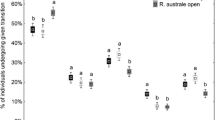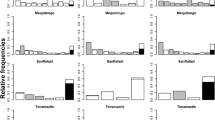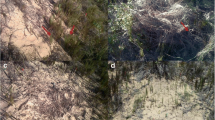The Consequences of Harvesting on Regeneration of a Non-timber Wax Producing Species ( Euphorbia antisyphilitica Zucc.) of the Chihuahuan Desert. For two centuries large quantities of non-timber candelilla (Euphorbia antisyphilitica Zucc., Euphorbiaceae) have been harvested from wild populations in northern Mexico. The wax that candelilla produces is used for various purposes by many different types of industries. Although extraction is regulated by the government, lack of ecological information has led to concern for overexploitation and population decreases. In the arid region of Cuatrocienegas, Coahuila, Mexico, we measured growth and reproduction in candelilla populations with variable harvest rates. Interviews were used to determine how harvest criteria and volume relate to plant performance and to learn about current extraction policies. We found the average annual harvest to be high (8,273.02 ± 2,076.09 kg/per person/per year) but the population size to be consistent (9,278 to 73,250 individuals/ha). Initial number of stems and height per plant at first census, time elapsed since last harvest, as well as seasonal changes affected individual plant performance. Relative growth rate (TR) was higher but also more variable among small plants relative to larger plants, making them more vulnerable to harvest effects. TR and fecundity rates are negatively affected when less than two years elapsed between harvests. Nowadays, although fewer local people work in candelilla extraction, those from the lowest socioeconomic brackets depend on it most. The incorporation of the ecological information obtained here into Mexican law will ensure better management of this NTFP resource. Also, improving the techniques of wax extraction and promoting fair trade to increase the price paid to producers could reduce the negative impacts on plant performance and ensure sustainable use of natural populations.
Las consecuencias de la cosecha en la regeneración de una especie no maderable productora de cera ( Euphorbia antisyphilitica Zucc.) del desierto Chihuahuense. Durante los dos últimos siglos se han cosechado grandes cantidades de candelilla (Euphorbia antisyphilitica Zucc.) de poblaciones silvestres en el norte de México y la cera que produce se usa con diversos propósitos en diferentes tipos de industrias. Aunque la extracción es regulada por instancias gubernamentales, la falta de información ecológica sobre la especie causa preocupación sobre su posible sobreexplotación. En el desierto de Cuatrociénegas, Coahuila, México, medimos el crecimiento y la reproducción en poblaciones de candelilla con tasas de cosecha variable. Se realizaron entrevistas sobre los volúmenes y criterios de cosecha actuales y se relacionaron con el desempeño en el crecimiento y reproducción de las plantas. Se encontró que existe una tasa anual de cosecha alta (8,273.02 ± 2,076.09 kg/por persona/año) pero tamaños poblacionales elevados (9,278 a 73,250 individuos/ha). El número de tallos y la altura por planta al inicio de este estudio, el tiempo transcurrido desde la última cosecha en cada población de candelilla y los cambios estacionales determinan el desempeño en el crecimiento y reproducción de las plantas. La tasa relativa de crecimiento (TR) fue alta pero más variable entre plantas con pocos tallos en relación con aquéllas con muchos tallos. Encontramos efectos negativos en TR y en la fecundidad cuando ha transcurrido menos de dos años desde la última cosecha. Actualmente la actividad candelillera es menos intensa que en el pasado pero sigue siendo una fuente importante de ingreso para las clases sociales más pobres. Un manejo más adecuado de este RFNM podría lograrse si se incorpora la información ecológica obtenida en este estudio, así mismo, mejorando las técnicas de extracción de cera y promoviendo un comercio justo, podrían reducirse los niveles de cosecha y los impactos sobre el desempeño de las plantas, disminuyendo los riesgos a la salud durante la extracción de cera y favoreciendo un uso sustentable.







Similar content being viewed by others
Literature Cited
Ackerly, D. D., S. S. Dudley, S. E. Sultan, J. Schmitt, J. S. Coleman, C. Randall-Linder, D. R. Sandquist, M. A. Geber, A. S. Evans, T. E. Dawson, and M. J. Lechowicz. 2000. The evolution of plant ecophysiological traits: Recent advances and future directions. BioScience 50:957–995.
Angulo, A., D. Flores, J. Tejeida, and R. Ocampo. 2005. Orégano: Oro verde del semidesierto. Pages 61–65 in C. López, S. Chanfón, and G. Segura, eds., La riqueza de los bosques mexicanos: Más allá de la madera. Experiencias de comunidades rurales. SEMARNAT, CONAFOR, CIFOR, México.
Anten, N. P. R., M. Martinez-Ramos, and D. D. Ackerly. 2003. Defoliation and growth in an understory palm: Quantifying the contribution of compensatory responses. Ecology 84:2905–2918.
Arnold, J. E. M. and M. Ruiz-Pérez. 2001. Can non-timber forest products match tropical forest conservation and development objectives? Ecological Economics 39:437–447.
Belcher, B. and K. Schreckenberg. 2007. Commercialization of non-timber forest products: A reality check. Development Policy Review 25(3):355–377.
Canales-Gutiérrez, E., V. Canales-Martínez, and E. M. Zamarrón-Rodríguez. 2005. Candelilla: Gotas de cera del desierto mexicano alrededor del mundo. Pages 101–107 in C. López, S. Chanfón, and G. Segura, eds., La riqueza de los bosques mexicanos: Más allá de la madera. Experiencias de comunidades rurales. SEMARNAT, CECADESU, CONAFOR, PROCYMAF, CIFOR, México.
Cervantes-Ramírez, M. C. 2002. Plantas de importancia económica en las zonas áridas y semiáridas de México. Universidad Nacional Autónoma de México, Instituto de Geografía, México.
CITES. 2009. Evaluación del estatus de Euphorbia antisyphilitica en México dentro de los apéndices de la CITES. Convención sobre el comercio internacional de especies amenazadas de fauna y flora silvestre. Buenos Aires, Argentina. http://www.cites.org/common/com/PC/18/X-PC18-Inf10.pdf
Clark, R. M., E. Linton, J. Messing, and J. F. Doebley. 2004. Pattern of diversity in the genomic region near the maize domestication gene tb1. Proceedings of the National Academy of Science (U.S.A.) 101:700–707.
CONAFOR. 2009. Coordinación General de Conservación y Restauración de la Naturaleza. Mexico. http://www.cites.org/common/com/PC/18/X-PC18-Inf10.pdf
Condit, R., R. Sukumar, S. P. Hubbell, and R. B. Foster. 1998. Predicting population trends from size distributions: A direct test in a tropical tree community. American Naturalist 152:495–509.
Crawley, M. J. 1993. GLIM for ecologists. Blackwell Science, London.
Eccardi, F. 2006. Candelilla: Luz en la noche de arena. Pages 62–81 in F. Eccardi, ed., México, valor de origen. Banco Santander, Mexico.
Endress, B. A., D. L. Gorchov, M. B. Peterson, and E. P. Serrano. 2004. Harvest of the palm Chamaedorea radicalis, its effects on leaf production, and implications for sustainable management. Conservation Biology 18:822–830.
Esparza-Olguín, L., T. Valverde, and E. Vilchis-Anaya. 2002. Demographic analysis of a rare columnar cactus (Neobuxbaumia macrocephala) in the Tehuacan Valley, Mexico. Biological Conservation 103:349–359.
Flores, C. S. and P. M. S. Ashton. 2000. Harvesting impact and economic value of Geonoma deversa, Arecaceae, an understory palm used for roof thatching in the Peruvian Amazon. Economic Botany 54:267–277.
Geller, G. N. and P. S. Nobel. 1986. Branching patterns of columnar cacti: Influences on PAR interception and CO2 uptake. American Journal of Botany 73:1193–1200.
——— and ———. 1987. Comparative cactus architecture and PAR interception. American Journal of Botany 74:998–1005.
Hodge, W. and H. Sineath. 1956. The Mexican candelilla plant and its wax. Economic Botany 10:134–154.
Jakobek, J. L., R. A. Backhaus, and K. Herman. 1986. Micropropagation of candelilla, Euphorbia antisyphilitica Zucc. Plant Cell, Tissue, and Organ Culture 7:145–148.
Martin, G. J. 1995. Ethnobotany, a methods manual. Chapman and Hall, New York.
Martínez-Ballesté, A., C. Martorell, and J. Caballero. 2008. The effect of Maya traditional harvesting on the leaf production, and demographic parameters of Sabal palm in the Yucatán Peninsula, Mexico. Forest Ecology and Management 256:1320–1324.
Martínez-Ramos, M. and E. Álvarez-Buylla. 1995. Ecología de poblaciones de plantas en una selva húmeda de México. Boletín de la Sociedad Botánica de México 56:121–153.
Martorell, C., E. Vega, and E. Ezcurra. 2006. Morphological consequences of the trade-off between growth and reproduction in a columnar cactus (Lophocereus schottii). Plant Ecology 183:125–131.
McGraw, J. B. and Y. K. Grabutt. 1990a. Demographic growth analysis. Ecology 71:119–1204.
——— and ———. 1990b. The analysis of plant growth in ecology and evolutionary studies. Trends in Ecology & Evolution 5:251–254.
Mendoza, A., D. Piñero, and J. Sarukhán. 1987. Effects of experimental defoliation on growth, reproduction and survival of Astrocaryum mexicanum. Journal of Ecology 75:545–554.
Ndangalasia, H. J., R. Bitarihob, and D. B. K. Doviec. 2007. Harvesting of non-timber forest products and implications for conservation in two montane forests of East Africa. Biological Conservation 134:242–250.
Nobel, P. S. 1983. Spine influences on PAR interception, stem temperature, and nocturnal acid accumulation by cacti. Plant, Cell & Environment 6:153–159.
Oesterheld, M. and S. J. McNaughton. 1991. Effect of stress and time for recovery on the amount of compensatory growth after grazing. Oecologia 85:305–313.
Pierson, E. A. and R. M. Turner. 1998. An 85-year study of saguaro (Carnegia gigantea) demography. Ecology 79:2676–2693.
Pospisil, J. 2004. Texas beyond history. Wax camps, the industry today. http://www.texasbeyondhistory.net/waxcamps/techniques.html.
Reif, J. C., P. Zhang, S. Dreisigacker, M. L. Warburton, M. Van Ginkel, D. Hoisington, M. Bohn, and A. E. Melchinger. 2005. Wheat genetic diversity trends during domestication and breeding. Theoretical and Applied Genetics 110:859–864.
Reyes-Agüero, J. A., J. Aguirre-Rivera, and C. Peña-Valdivia. 2000. Biología y aprovechamiento de Agave lechuguilla Torrey. Boletín de la Sociedad Botánica de México 67:75–88.
Ruiz-Pérez, M., B. Belcher, R. Achdiawan, M. Alexiades, C. Aubertin, J. Caballero, B. Campbell, C. Clement, T. Cunningham, A. Fantini, H. De Foresta, C. García Fernández, K. H. Gautam, P. Hersch Martínez, W. De Jong, K. Kusters, M. G. Kutty, C. López, M. Fu, M. A. Martínez Alfaro, T. K. Raghavan-Nair, O. Ndoye, R. Ocampo, N. Rai, M. Ricker, K. Schreckenberg, S. Shackleton, P. Shanley, T. Sunderland, and Y.-C. Youn. 2004. Markets drive the specialization strategies of forest peoples. Ecology and Society 9(2):Art.4.
SCBD. 2001. Sustainable management of non-timber forest resources. CBD Technical Series 6. Secretariat of the Convention on Biological Diversity, Montreal.
SEMARNAT. 1999. Norma Oficial Mexicana NOM-018-RECNAT-1999, que establece los procedimientos, criterios y especificaciones técnicas y administrativas para realizar el aprovechamiento sostenible de la hierba de Candelilla, transporte y almacenamiento del cerote. Diario Oficial de la Federación, Mexico.
Standley, P. C. 1926. Trees and shrubs of Mexico. Smithsonian Press, Washington.
Stearns, S. C. 1992. The evolution of life histories. Oxford University Press, Oxford.
Steenbergh, W. F. and C. H. Lowe. 1983. Ecology of the saguaro. III: Growth and demography. National Park Service Scientific Monograph Series Number 17. United States National Park Service, Washington.
Ticktin, T. 2004. The ecological implications of harvesting non-timber forest products. Journal of Applied Ecology 41:11–21.
———, P. Nantel, F. Ramírez, and T. Johns. 2002. Effects of variation on harvest limits for nontimber forest species in Mexico. Conservation Biology 16:691–705.
Torres-Torres, N. and M. Roman-Domínguez. 1980. La cera de candelilla en México y sus perspectivas de comercialización. Tesis Licenciatura. Universidad Nacional Autónoma de México, México.
Trumble, J. T., D. M. Kolodny-Hirsch, and I. P. Ting. 1993. Plant compensation for arthropod herbivory. Annual Review of Entomology 38:93–119.
Tunell, C. 1981. Wax, men and money. Texas Historical Commission. http://www.texasbeyondhistory.net/waxcamps/techniques.html
Van Rijsoort, J. 2000. Non-timber forest products (NTFPS). Their role in sustainable forest management in the tropics. Theme Studies Series 1, Forests, Forestry and Biological Diversity Support Group. National Reference. Centre for Nature Management (EC-LNV). International Agricultural Centre (IAC), Wageningen.
Weiner, J., L. G. Campbell, J. Pino, and L. Echarte. 2009. The allometry of reproduction within plant populations. Journal of Ecology 97:1220–1233.
Yeaton, R. I., R. Karban, and H. B. Wagner. 1980. Morphological growth patterns of saguaro (Carnegia gigantea: Cactaceae) on flats and slopes in Organ Pipe Cactus National Monument, Arizona. The Southwestern Naturalist 25:339–349.
Zavala-Hurtado, J. A., F. Vite, and E. Ezcurra. 1998. Stem tilting and pseudocephalium orientation in Cephalocereus columna-trajani (Cactaceae): A functional interpretation. Ecology 79:340–348.
Acknowledgments
The study was funded by CONACyT grant to AMB (“Apoyos integrales para la formación de doctores en ciencias,” 2006, application 56722) as a postdoctoral associated with MCM, at Lab. Genética y Ecología, Instituto de Ecología UNAM; and CONACyT (Project A350 awarded to MCM). We thank Adny Alicia Celis, Erika Pagaza, Agustina Duran, Paty, Jocelyn Durán, Romi Portilla, Diego Rabago, and Biologist Laura Cortés Zárraga for their help with field work. We also thank to Jose Luis Quiz and the authorities of San Lorenzo ejido, Benigno Reyna Ramírez and Leno Quiz Ramírez, for allowing us to conduct our research on their property. Adrian Martínez Degollado, forest consultant of SEMARNAT, and members of ejidos San Lorenzo, La Vega, Antiguos Mineros del Norte, and Boquillas, who brought us invaluable information for this research. Jordan Golubov read and commented on a previous version of the manuscript. We appreciate the logistical support from M. en C. Mariana Rojas Aréchiga at UNAM, and the staff of the Natural Protected Area in Cuatrocienegas, in particular Oscar Muñoz and Mirna Mendoza who helped us to establish contact with the candelilleros.
Author information
Authors and Affiliations
Corresponding author
Rights and permissions
About this article
Cite this article
Martínez-Ballesté, A., Mandujano, M.C. The Consequences of Harvesting on Regeneration of a Non-timber Wax Producing Species (Euphorbia antisyphilitica Zucc.) of the Chihuahuan Desert. Econ Bot 67, 121–136 (2013). https://doi.org/10.1007/s12231-013-9229-4
Received:
Accepted:
Published:
Issue Date:
DOI: https://doi.org/10.1007/s12231-013-9229-4




